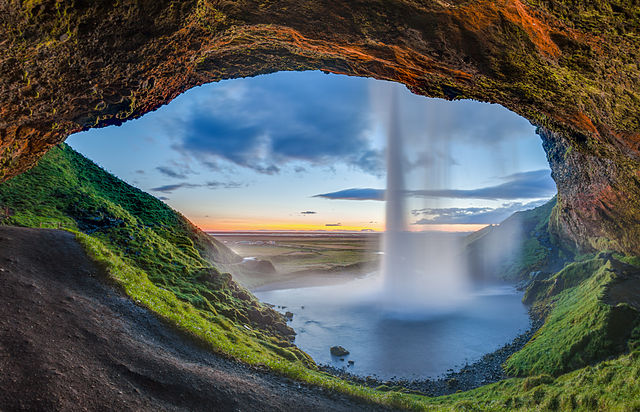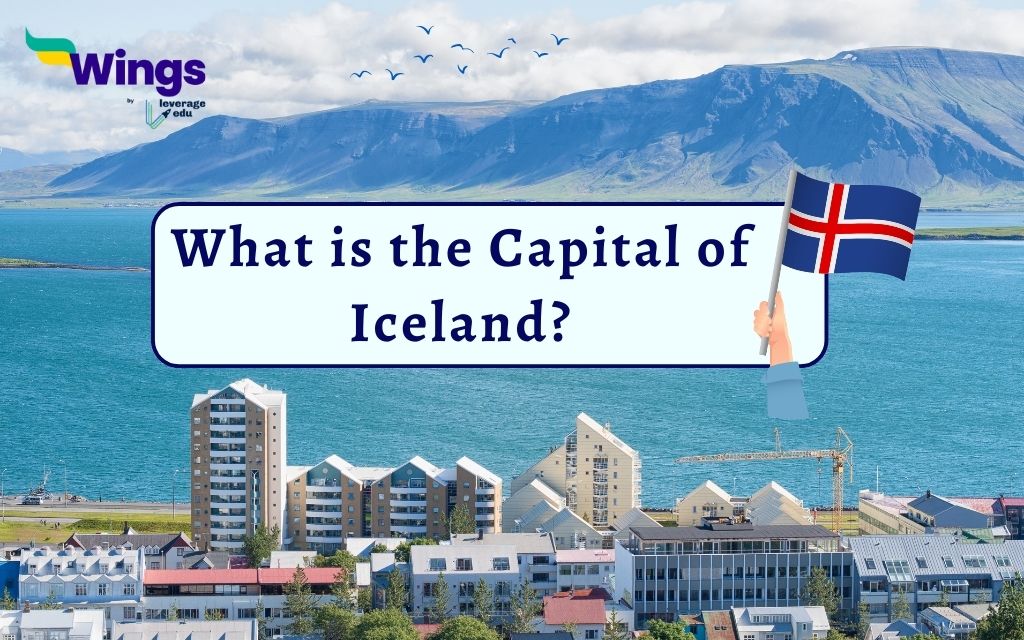The capital of Iceland is Reykjavík. Iceland is a Nordic island nation on the Mid-Atlantic Ridge between North Atlantic and Arctic Oceans. It is culturally and politically European yet the region’s most sparsely populated. The capital of Iceland shelters about 36% of Iceland’s roughly 380,000 residents and Icelandic is the official language. In this article, we will uncover everything about the Reykjavík.
Contents
Overview of Reykjavík
Reykjavík, Iceland’s capital and biggest city, sits on the southwestern coast along Faxaflói Bay. Other details of the capital of Iceland are given below.
| Category | Description |
| Status | Capital & Largest City of Iceland |
| Location | Southwestern Iceland, Southern Shore of Faxaflói Bay |
| Significance | First Permanent Settlement (874 AD) |
| Founded | 1786 |
| Role | Cultural, Economic, & Governmental Center |
| Additional Info | Popular Tourist Destination, Clean, Green, & Safe |
Brief History of Reykjavík
The first permanent settlement in Iceland is believed to be the present capital of Iceland, Reykjavík, established around 871 AD by Ingólfur Arnarson. Back then, it was a small settlement fueled by wool production.
Reykjavík wasn’t officially designated as the capital until much later, in 1844, when the Icelandic Parliament was reinstated. Iceland gained independence from Denmark in 1944, solidifying Reykjavík’s position as the capital city.
The 20th century saw rapid urbanization in Reykjavík as people migrated from rural areas for city life. While this shift caused some tension, it also resulted in a vibrant capital city. Today, Reykjavík offers various museums to explore its rich history, from Viking settlements to the lives of everyday Icelanders.
Also Read – What Is The Capital Of Nepal?
Demography and Geography of Reykjavík
Reykjavík is situated in southwest Iceland. Its coastline is a fascinating mix of peninsulas, coves, straits, and islands. The area’s unique landscape is a result of its dramatic geological history. During the Ice Age, a massive glacier covered parts of the city, with some areas even underwater. As the Ice Age ended, the land began to rise, revealing the hills and shaping the coastline we see today. Notably, Öskjuhlíð and Skólavörðuholt hills are believed to be remnants of ancient volcanoes.
Reykjavík is Iceland’s undisputed centre of population. As of 2023, the city itself boasts over 131,000 residents, constituting a significant 36% of the entire country’s population. The Capital Region, encompassing Reykjavík and its surrounding municipalities, is home to an even larger 64% of Icelanders, totalling over 242,000 people. Interestingly, Reykjavík has seen a growing immigrant population in recent decades. As of 2019, immigrants make up nearly 19% of the city’s residents, with a majority originating from European Union and EFTA countries.
Also Read- What Is The Capital City Of Italy?
Economy and Culture of Reykjavík
Reykjavik is the capital of Iceland so it is also considered the powerhouse of economy.
- Borgartún is Reykjavík’s financial heart, boasting numerous companies and several investment banks.
- Reykjavík mirrored Iceland’s economic boom and bust during the 2000s, experiencing a surge in construction followed by a crash in 2008.
Culture
- Reykjavík, Iceland’s capital, has the country’s rich cultural tapestry.
- Visitors can explore Viking heritage through the Icelandic language’s connection to Old Norse.
- A thriving arts scene with galleries, bookstores, theatres, and an orchestra flourishes in the city.
- Icelandic music, a unique blend of pop and folk, offers a local cultural experience.

Facts of Reykjavík
Reykjavík, a treasure trove of literature, became a UNESCO City of Literature in 2011, the first non-English speaking city and the fifth globally to hold this title.
Reykjavík holds the unique distinction of being the world’s northernmost capital city of a sovereign state, a title it claimed in 1918 when Iceland gained independence from Denmark.
Surprisingly, Reykjavík didn’t always welcome furry friends! Between 1924 and 1984, a 60-year ban on dogs existed in the city.
While McDonald’s operated briefly (1993-2009), Reykjavík has no Starbucks. Economic factors led to the closure of McDonald’s, paving the way for local alternatives like Metro.
FAQ
The official language of Iceland is Icelandic, a North Germanic language similar to Old Norse.
The world knows Iceland for its most beautiful northern lights.
The Evangelical Lutheran Church of Iceland is the national church, with roughly 80% of the population as members.
Related Blogs
| What Is The Capital Of Bangladesh? | What Is The Capital Of Thailand? |
| What Is The Capital Of New Zealand? | What Is The Capital Of Pakistan? |
| What is the Capital of Canada? | What Is The Capital Of South Africa? |
| What is the capital city of Germany? | What Is The Capital City Of Tamil Nadu? |
| What is the Capital City of Gujarat? | What is the Capital City of Bihar? |
This is everything about what is the capital of Iceland. For more such content, visit our general knowledge page.
 One app for all your study abroad needs
One app for all your study abroad needs














